A Private Tour today, down in the Brecks. It was a cloudy start but brightened up through the morning to blue skies and a lovely warm afternoon. A great day to be out birding.
With the risk of heat haze if the sun came out, we went straight to Weeting Heath this morning to see the Stone Curlews. As we got out of the car, a Treecreeper was singing in the car park. We made our way straight down to the West Hide where, as soon as we opened the flaps, we could see our first Stone Curlew.
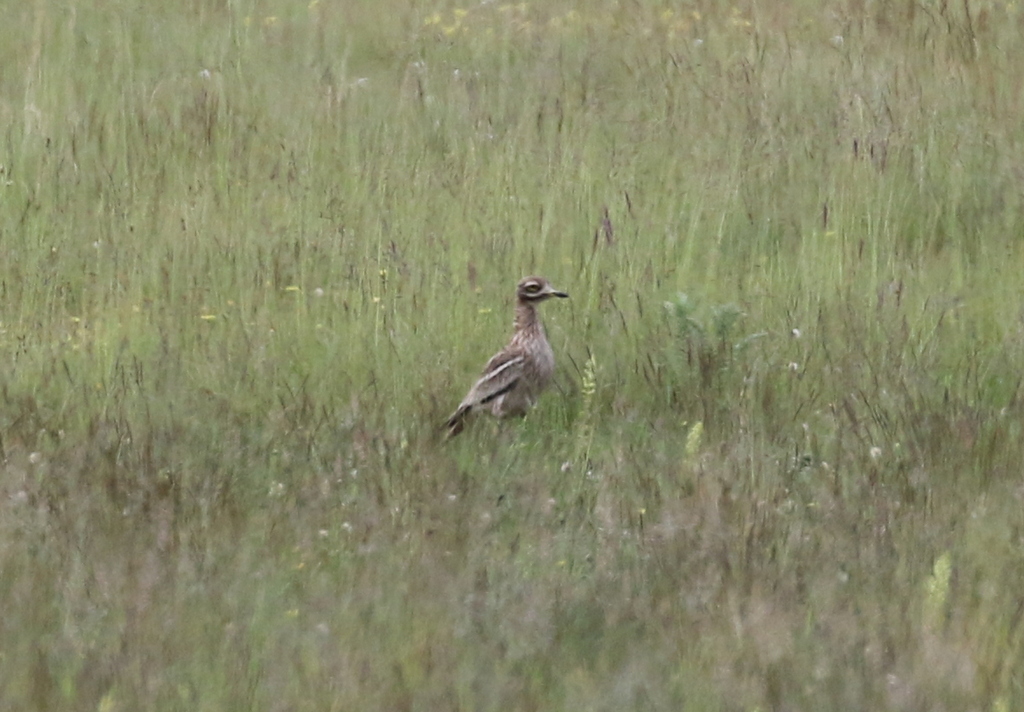
The grass here is very long at the moment – the rabbit population has dropped precipitously in recent years, which is proving to be a major issue. Despite this, we had good views of one adult Stone Curlew walking around in a more open patch not far in front of the hide.
A careful scan revealed three more Stone Curlews, hiding in the grass away to the right. As they moved across to where the grass isn’t so thick, we could see they were a family, two adults and a well grown juvenile. It has been a much better year in 2018 so far at Weeting, with two pairs currently raising three youngsters. We couldn’t see the second pair today – they seem to have disappeared off into the long grass at the moment!
A regular Eurasian Curlew was out in the grass too, flashing its long down-curved bill – and looking very different from its namesakes. The two are unrelated – Stone Curlew is named just for its call, which sounds rather like a Curlew, but it is actually a member of the Thick-knee family. Eurasian Thick-knee doesn’t have such a good ring to it!
Having enjoyed great views of the Stone Curlews, we decided to turn our attention to the trees. We had a look for the Spotted Flycatchers just outside the hide but couldn’t find them here today. As we walked up to the small hide overlooking the feeders at the west end, we could hear a Yellowhammer and a Mistle Thrush, both singing across the road.
There was a lot of activity on the feeders. Blue Tits and Great Tits were coming and going and a family of Marsh Tits was perched in the bushes just behind. A Nuthatch made several repeat visits to the seeds too. Several Goldfinches dropped into bathe in the pool in front of the hide.
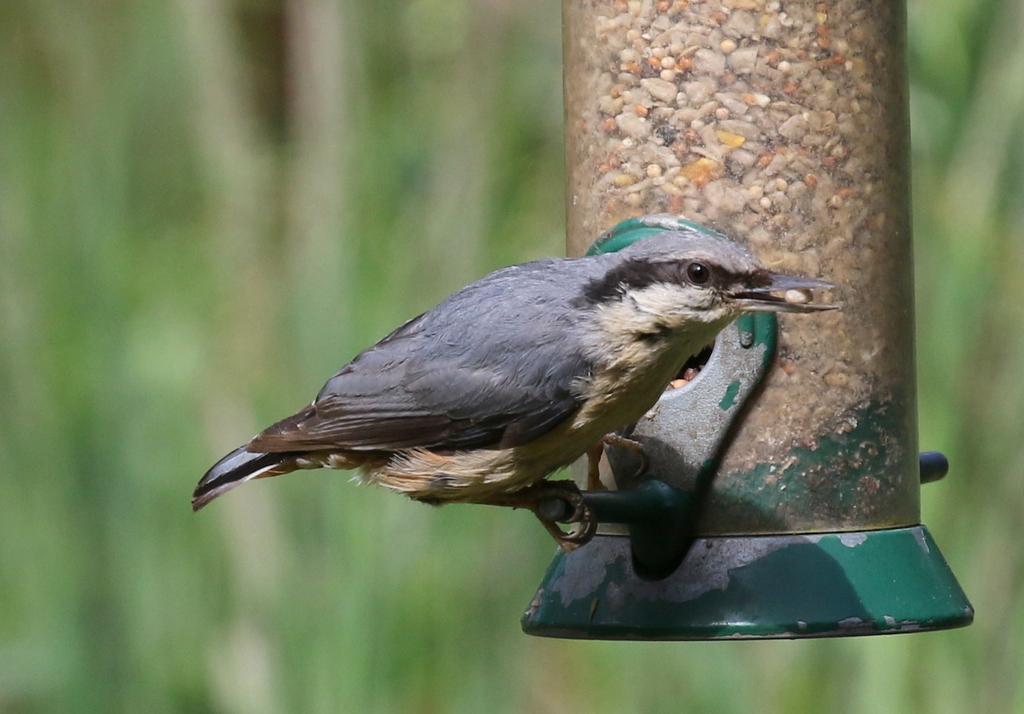
A quick walk back and down to the East Hide failed to reveal any Spotted Flycatchers that end either, though we did see a pair of Coal Tits high in the pines and a family of Long-tailed Tits which flitted quickly through the bushes. The Treecreeper finally gave itself up in the top of one of the pines too.
With a busy morning planned, we headed over to Lakenheath Fen next. A Brown Argus in front of the Visitor Centre was a nice start to our butterfly list. A male Reed Bunting came in to the table below the feeders the other side, where a Reed Warbler was singing from the reeds by the pool, the first of many we would hear today. A Common Whitethroat was singing from the sallows on the walk out, along with Blackcap and a Cetti’s Warbler which shouted at us from the reeds.
There were lots of damselflies in the vegetation by the path. They were mostly Azure Damselflies and a few Blue-tailed Damselflies, but as we walked along, we kept a close eye to see if we could find any others. It didn’t take too long before we found a Variable Damselfly – when it settled, we could see its darker thorax with broken antehumeral stripes, and the distinctive black ‘goblet’ pattern on the segments at the base of its abdomen. A Hairy Dragonfly was patrolling in front of the trees here too.
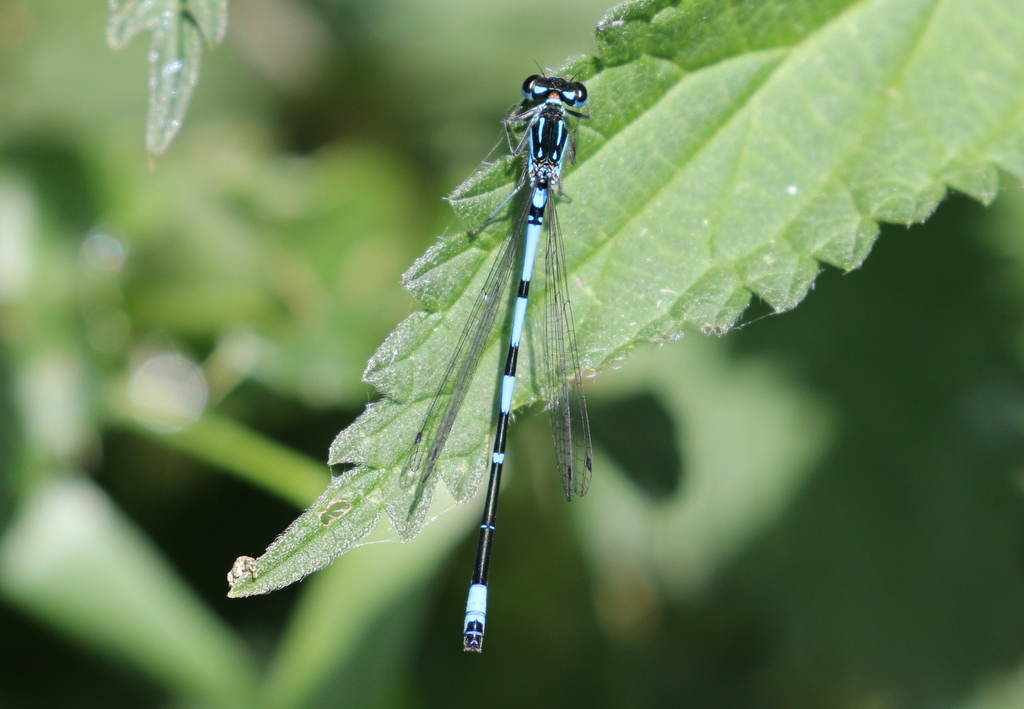
Continuing on to New Fen Viewpoint, we could hear a Cuckoo singing in the poplars. Rather than linger at the viewpoint itself, where there didn’t seem to be much happening at that moment, we took the path along the bank on the south side.
There were more dragonflies along here and one of the first we found was a smart male Scarce Chaser resting on a reed leaf. We had a good look at it – as well as the blue abdomen with a black tip, we could see the black bases to the wings. There were lots of Four-spotted Chasers along here too and several Red-eyed Damselflies.

It wasn’t only insects on view along here though. A little further on, we spotted a Hobby flying quick and low, skimming the tops of the reeds. We stopped to watch it and it put on an impressive show, hawking back and forth in front of us, swooping low over the pools catching dragonflies, climbing up and then eating them on the wing.
The sun was starting to come out now and the Hobby gradually started to gain height. A second Hobby appeared even higher above it. However, rather than drift off, the first Hobby then came straight towards us and started to hunt higher over the reeds just in front of us, almost over our heads at times. Fantastic stuff!
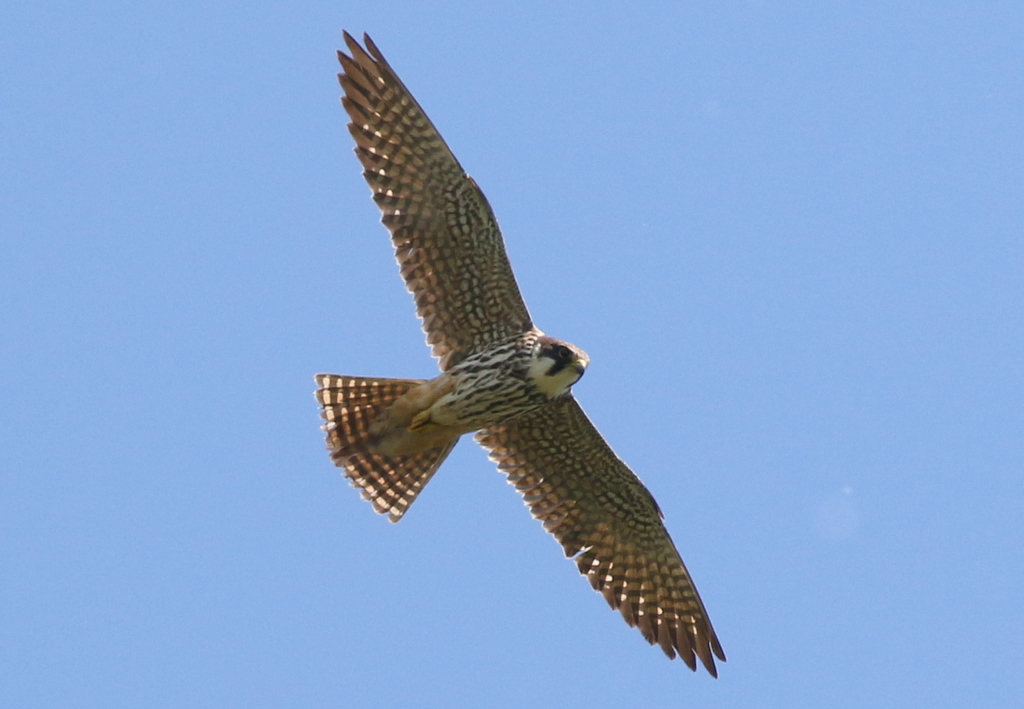
We were so transfixed by the Hobby, we almost missed a Bittern which flew across the channel in front of us. Thankfully we got a quick sight of it, before it then crashed into the reeds the other side and disappeared in. A Marsh Harrier drifted in over the reeds and dropped down over the back. There were Bearded Tits calling here too, but they remained stubbornly hidden in the reeds out of view.
Continuing on, we stopped to listen to two Cuckoos singing in West Wood. They were singing against each other and provided us with a great stereo performance. One was moving around in the poplars in front of us and eventually came closer to the near edge where we had a quick view of it flying between trees. A Black-tailed Skimmer was basking on the track.
We had a quick look in at Mere Hide, but it was rather full with photographers camped out hoping to get a look at one of the Bitterns which has been feeding here periodically. There was no sign of it, so we moved on. The pair of Great Crested Grebes with four stripy-headed juveniles was still on one of the pools by the path, though only one of the youngsters wanted a ride on its parent’s back this morning. One of the adults was busy finding food – catching damselflies above the water surface, to feed to its young.

Joist Fen Viewpoint provided a welcome rest for a few minutes. There were lots of Reed Warblers and Reed Buntings in the reeds here, appropriately enough! Several Marsh Harriers circled up, mostly some way over but a female drifted towards us and across the reeds in front. Three more Hobbys were feeding much higher now, off in the distance.
It was already one o’clock, so we needed to be getting back for lunch. Rather than just follow the main path, we decided to walk back along the bank on the south side of New Fen, hoping for a Kingfisher. As we got up onto the bank, someone there was just pointing out a bird to another couple and as we walked up they informed us that there was a Bittern showing.
We looked across to see the Bittern perched with its neck stretched up, half way up the reeds over below the edge of West Wood, trying to look just like a bunch of reeds. It stayed there for several minutes, giving us a chance to get a great look at it through the scope. The pale blue skin at the base of its bill shone in the sun.
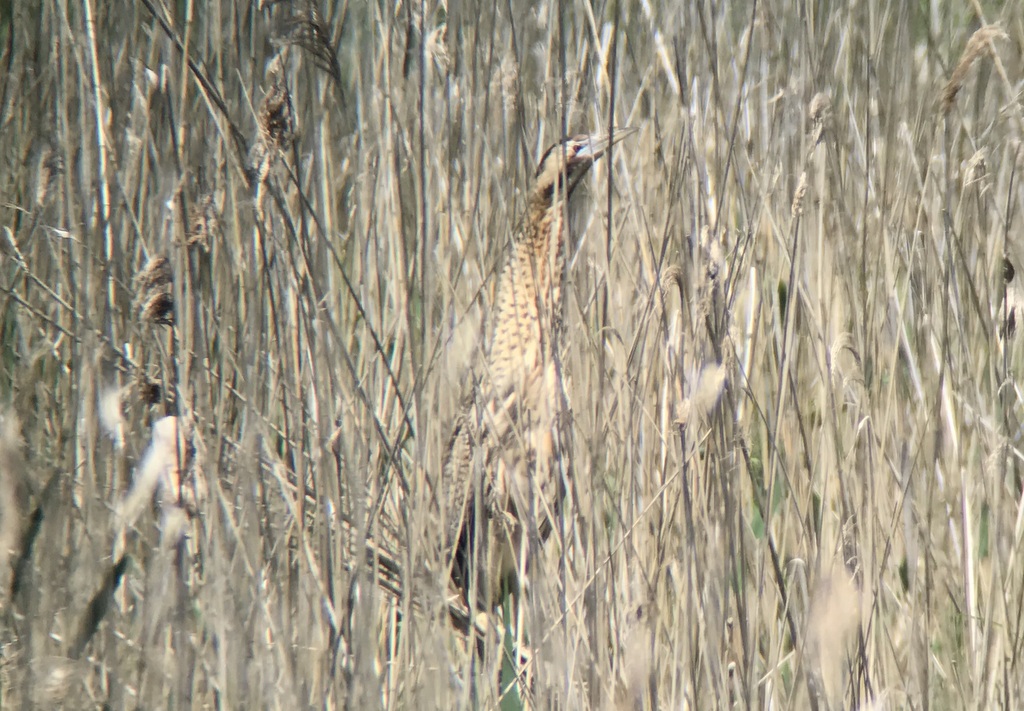
The Bittern had a preen and a shake, and then set off over the reeds, flying right across to the other side before dropping back down into the reeds. We continued on our way back. A Kingfisher called and appeared briefly in a small tree out in the reeds, but flew up out of view before we could all get a look at it.
With the stop for the Bittern, we were rather later back than planned. We had to pop in to Brandon to pick up some food, and after battling with the traffic it was time for a rather late lunch. Santon Downham churchyard provided a convenient location close by to eat. A pair of Grey Wagtails were collecting insects on the roof of the church, presumably to take off to their hungry brood somewhere, presumably down at the river, and a couple Goldcrests were singing in the trees.
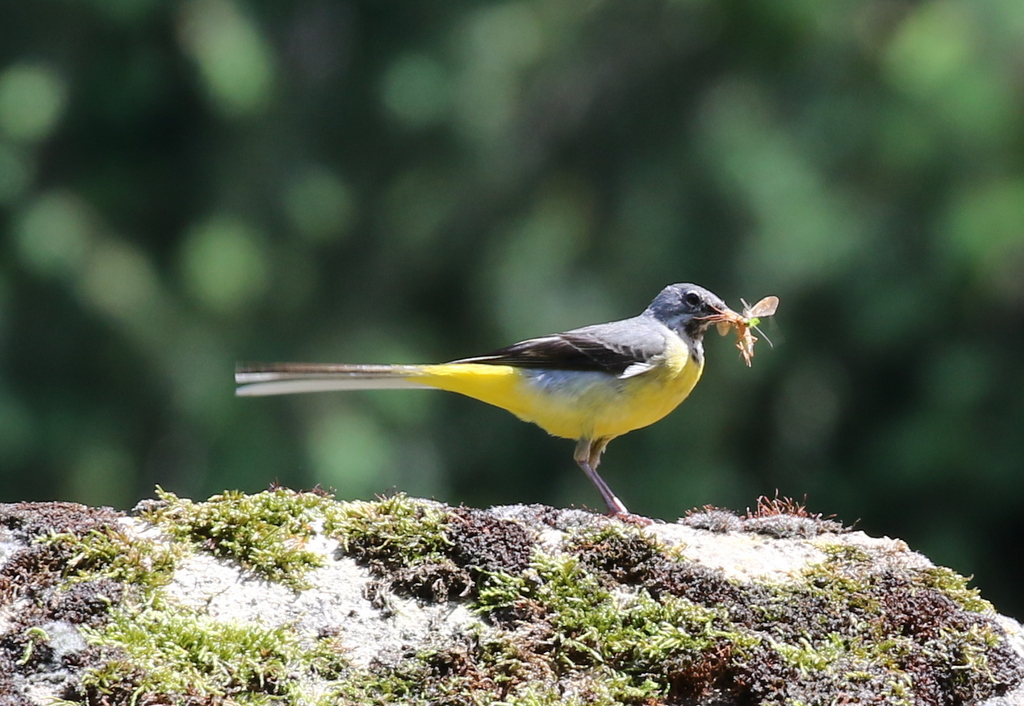
After lunch, we set off to explore the Forest. Our first stop was rather quiet – we had a short walk along a ride to a clearing where Woodlarks breed, but it was hot and sunny now and everything seemed to be in hiding!
At our next stop, we were more successful. We walked along the edge of an army firing range – large swathes of the Brecks are used for battle training. Again, it seemed rather quiet at first. That was, until the heavy artillery started up just the other side of the fence! There were repeated volleys – Boom! Boom! – as the big guns fired and the air reverberated around us. Not great for trying to find birds you might think, but the Woodlarks were as surprised as we were and took off from the trees just the other side of the fence.
The artillery went on for ages and the Woodlarks wouldn’t settle again. They kept flying round, calling. Every time they landed, they were spooked by the next volley. The only benefit was that, eventually, they flew and landed on the fence in front of us. They stayed just long enough for us to get a good look at them in the scope, and then they were off again.
We decided to retreat. There were lots of butterflies in the grass along the path as we walked back, mostly Small Heath which fluttered up ahead of us. Another Brown Argus perched briefly on a flower to feed.
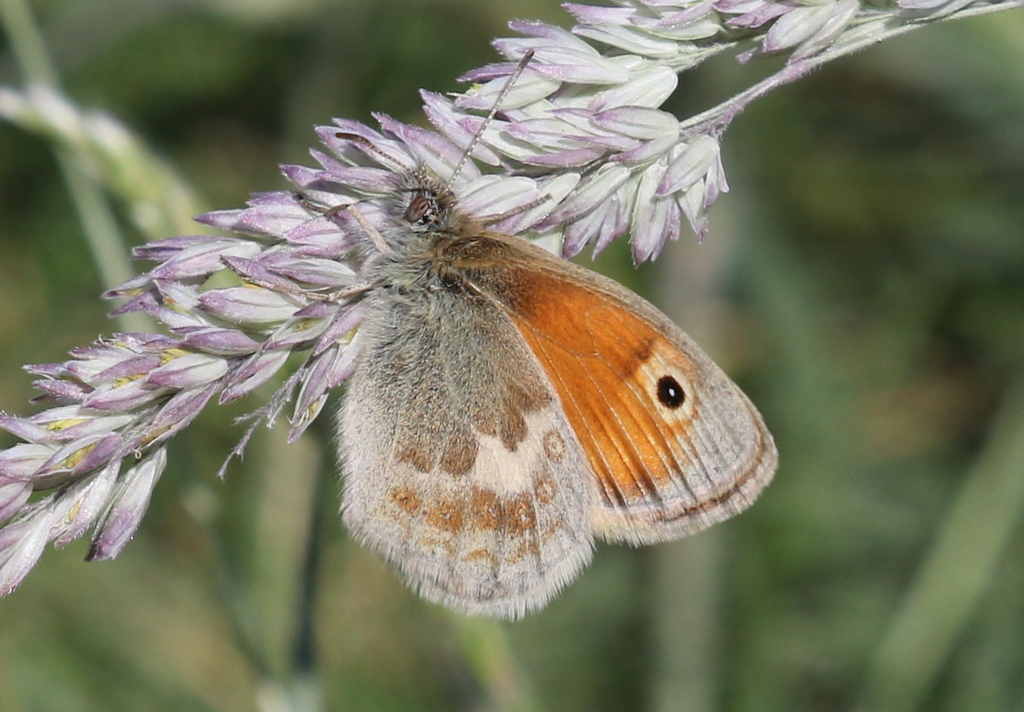
Even though it was still hot and sunny and in the mid afternoon lull, we decided to try our luck with a brief visit to Lynford Arboretum. We heard a couple of Siskins flying round calling over the pines as we walked in and a Stock Dove was whooping from the trees, but there was nothing of note in the garden of the cottages today and it was fairly quiet as we walked down towards the bridge.
Down at the bottom of the hill, some movement in the trees caught our attention and we turned to see a small bird swoop out from a branch, loop round and then land back on the branch again. It was a Spotted Flycatcher. We stopped to watch it for a while, hunting for insects from the trees in a small clearing on the edge of the wood.

While we were watching the Spotted Flycatcher, we caught a glimpse of a small bird flying up into the fir trees opposite. We walked up and found it feeding in one of the outer branches, a Goldcrest. A quick look round the lake produced lots of Common Blue Damselflies, a couple of Emperor Dragonflies and a Little Grebe hiding in the reeds, as well as the regular other wildfowl.
There was still time for one last stop before we were due to finish, so we headed back into the Forest. We parked up by a ride and walked in to a clearing. The Tree Pipit kept us waiting a tantalising couple of minutes before it gave in and started singing. It landed on the wires in its usual place and sang from there for a while – we had a great view of it through the scope here.

A second Tree Pipit started singing behind us, from a young oak just the other side of the path. The two of them matched each other song for song for a while, until the first launched itself into the air and fluttered up singing, before parachuting down into the grass just across the path directly opposite the oak tree. The second Tree Pipit responded – not a full on song flight, but fluttered down singing to the ground nearby.
Unfortunately, given the height of the vegetation, we couldn’t see what went down, but after a couple of minutes the first Tree Pipit fluttered up singing again and parachuted back down onto the wires where it had been before. Territorial boundaries re-established? A smart male Yellowhammer was singing from the edge of the trees too.
It was a lovely way to end the day, listening to the Tree Pipits singing in the clearing. It had been another great day in the Brecks, so we set off for home.
















